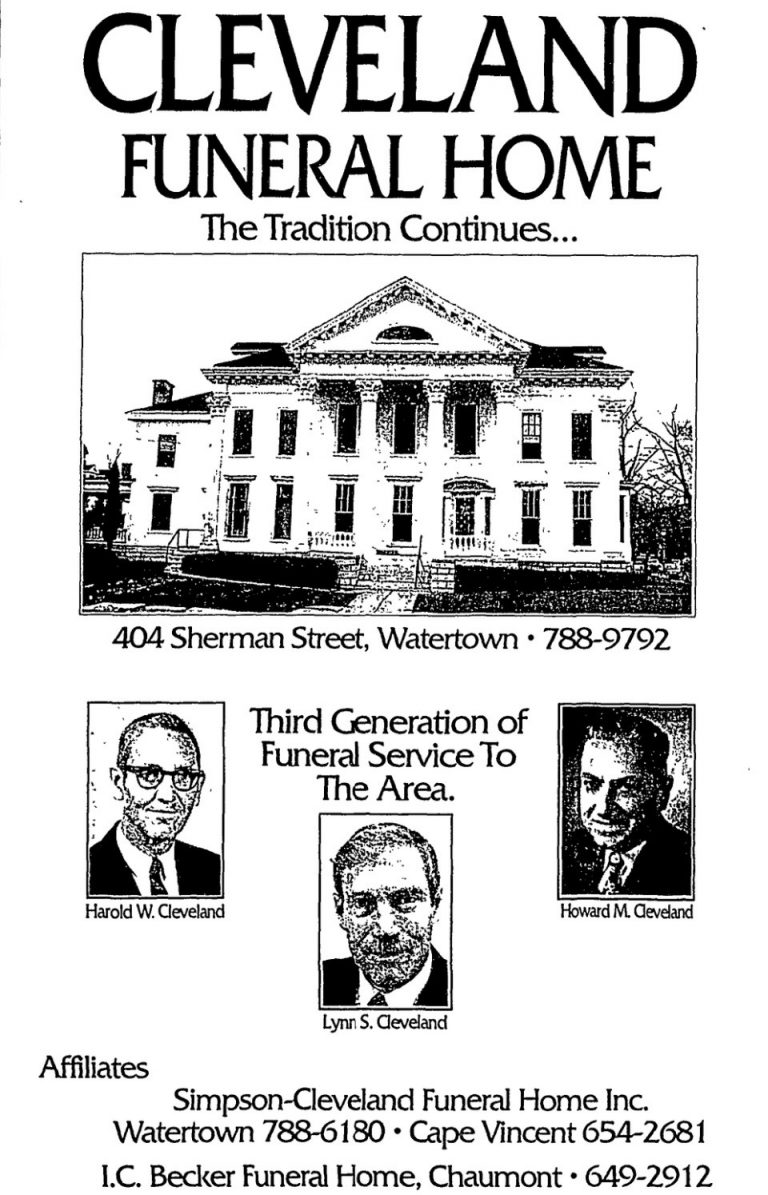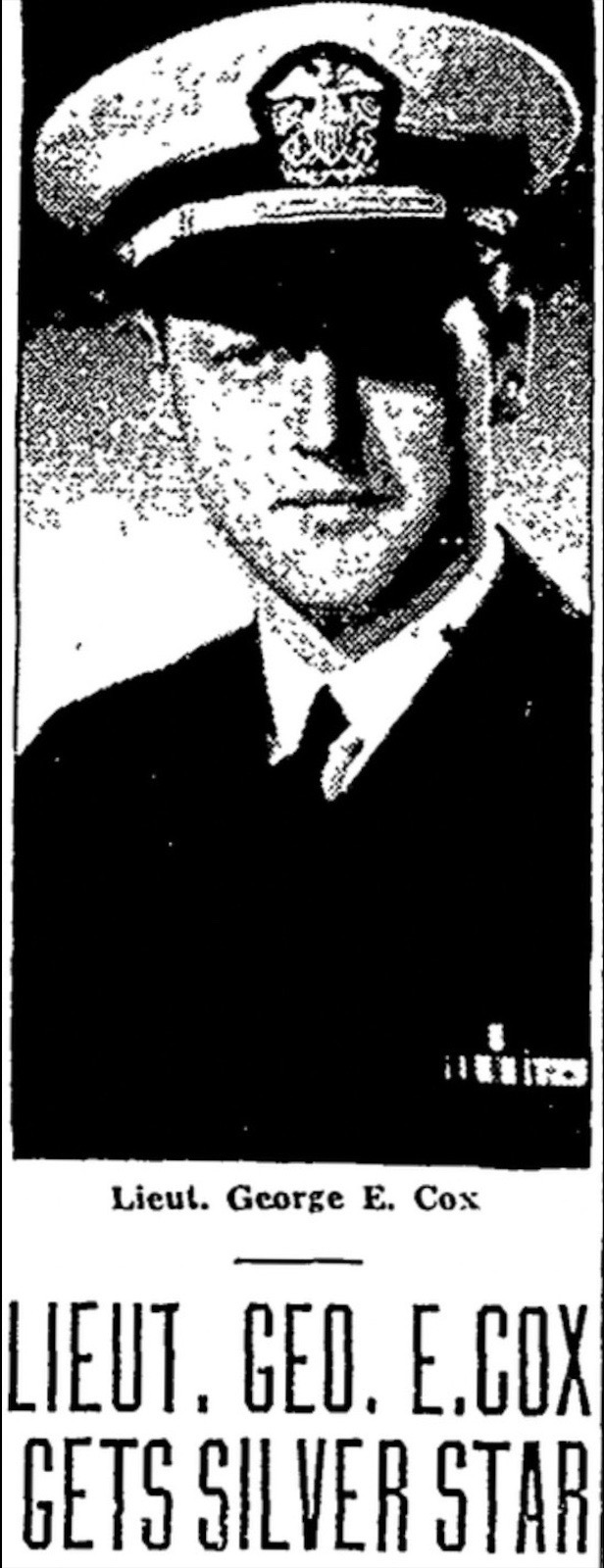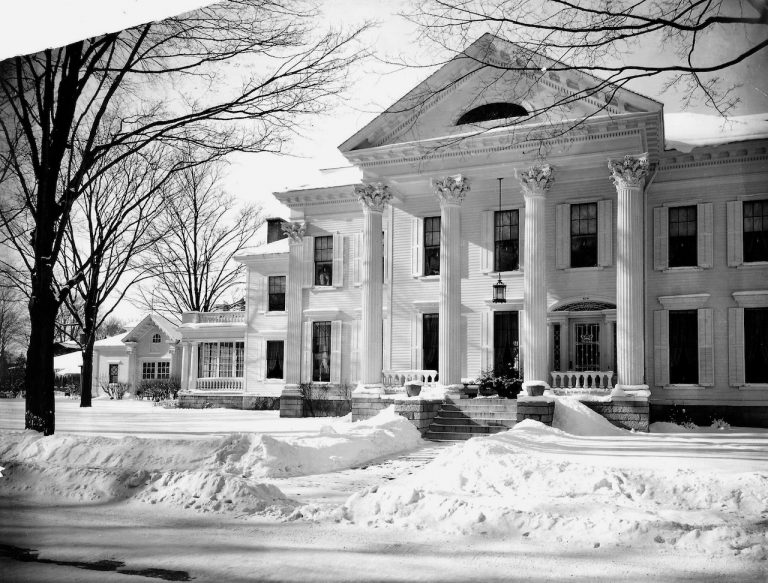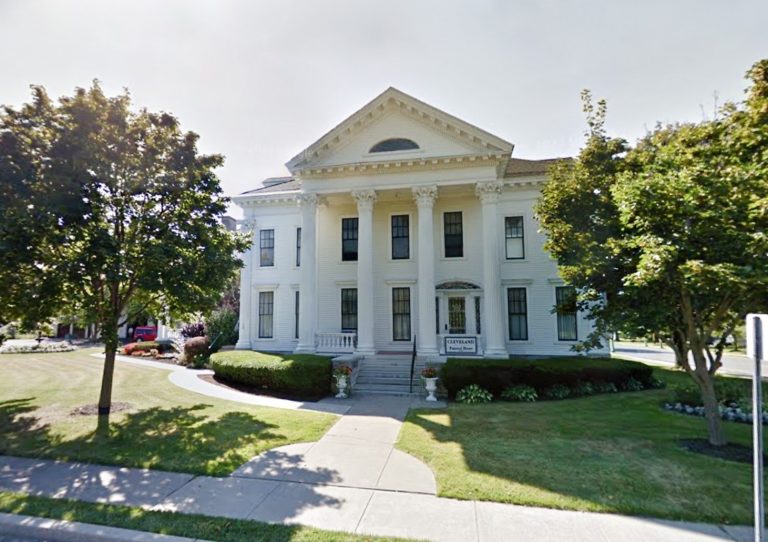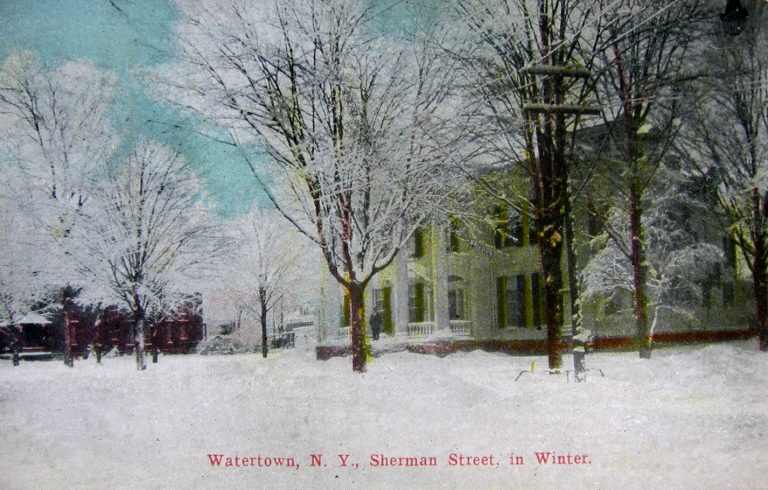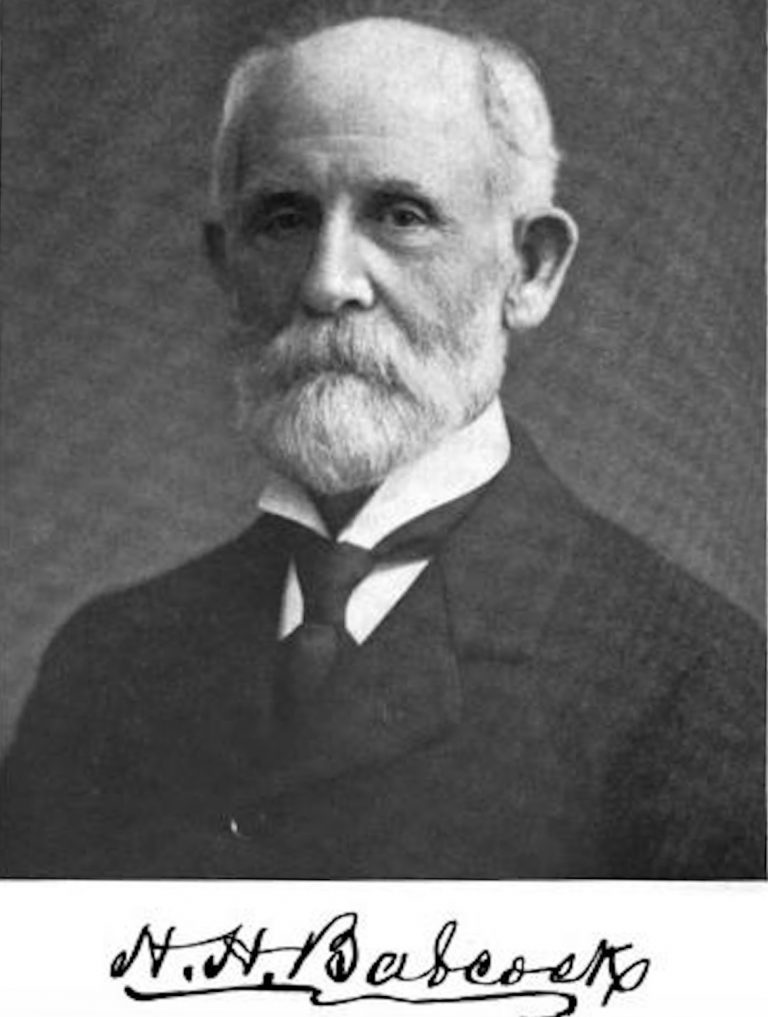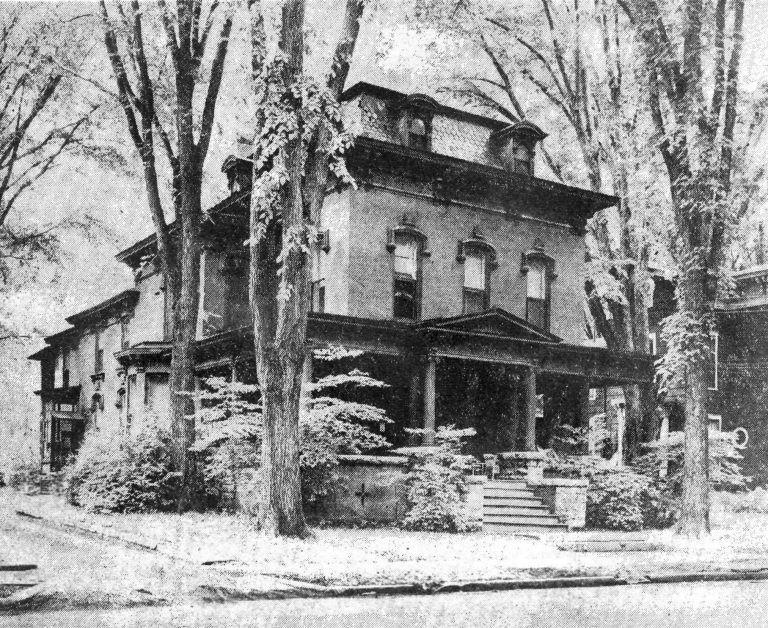H. H. Babcock Mansion Gets A Greek Revival Makeover By Anson R. Flower And Later Becomes Cleveland Funeral Home
Constructed in the 1860s for Henry Holmes Babcock, president of the H. H. Babcock Co., the grand white Babcock mansion at 404 Sherman Street, home to the Cleveland Funeral Home since 1952, was heavily influenced by the White House in Washington D. C. Those influences, however, wouldn’t come for another 40 years after Babcock’s death in 1903 when the property was passed to his daughter and son-in-law.
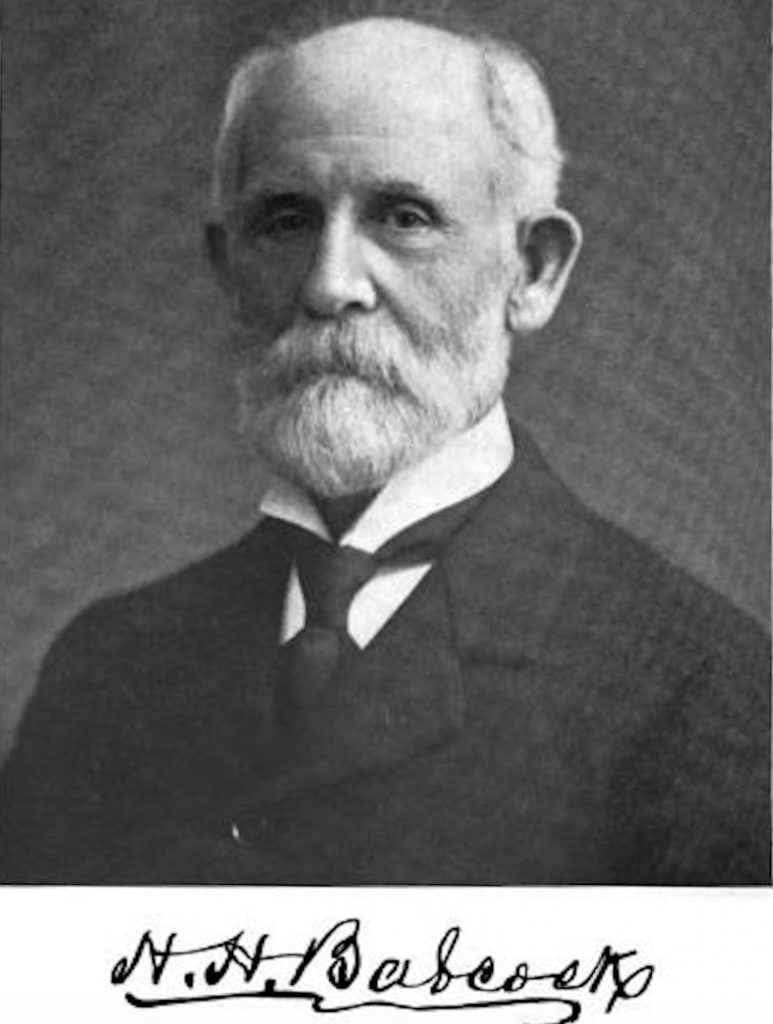
That son-in-law, twice over, in fact, was Anson R. Flower, brother to Roswell P. Flower. Anson married Amelia L. Babcock on June 9, 1870, at the old Trinity Church on Court Street. It was said in the Watertown Daily Times that “It was no less an occasion than the finest wedding that Watertown has seen for many a day.” Described as beautiful and accomplished, Amelia was “the long-acknowledged reigning belle of our city.”
Unfortunately, the wedding would last just shy of four years as Amelia passed away on May 15, 1874, at the age of 25 after a brief illness. The funeral was held at the home of H. H. Babcock and burial took place at Brookside Cemetery. Though common for funerals to take place in the homes back then, there’s nevertheless a bit of irony in that the Babcock residence would later become a funeral home.
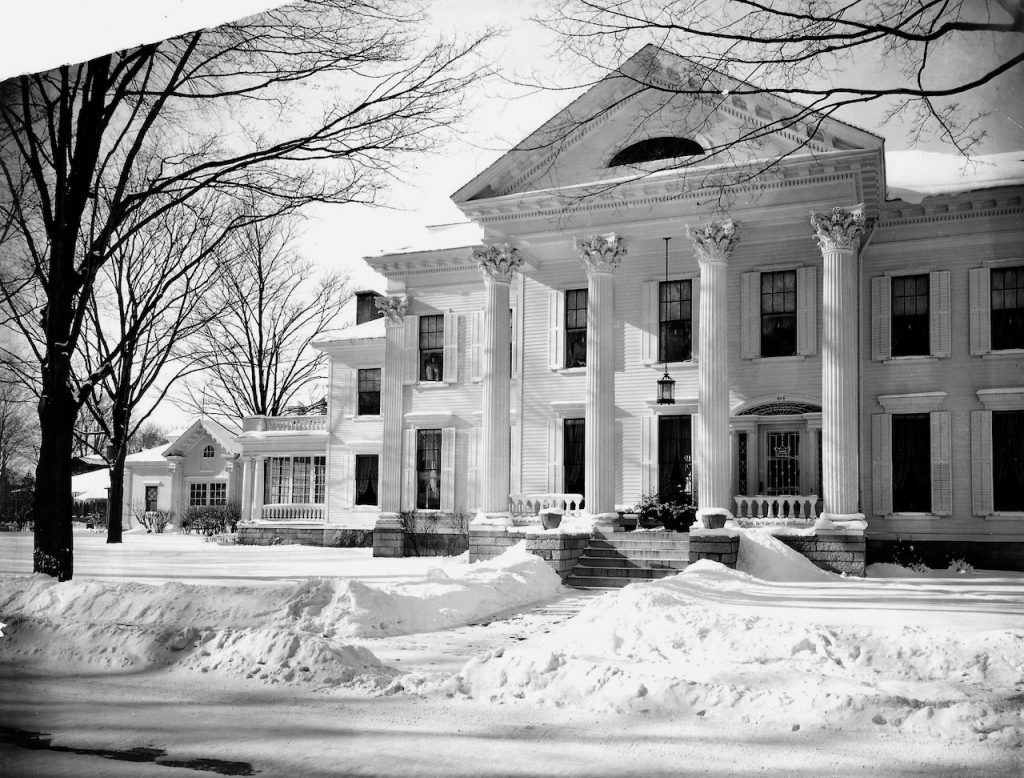
The death of Amelia was untimely and very saddening for the family, the city, and the surrounding areas. The Utica Observer paid tribute to her, noting two or three years of her life was spent at the Utica Seminary, where she completed her studies.
It is difficult to realize the fact that this lady is dead—she who was beautiful as even imagination could paint. Queenly in appearance, amiable, gentle, attractive, and happy under all circumstances, she invariably won the love of all about her. As a maiden and loving wife and devoted friend, each day of her life added wealth to her accomplishments and increased the number of her friends.
She was the pride of all who knew her. In the hearts of the little children of her Sunday school class, who were her especial favorites, the admiring companions of her life, the oldest residents of the city of Watertown, her death will cause a feeling of sorrow which can never be effaced.
The whole city will mourn the loss of a favorite, and the strangers who have had the pleasure of knowing the deceased cannot but feel that one of the most lovable of women has been called to a brighter and more fitting home.
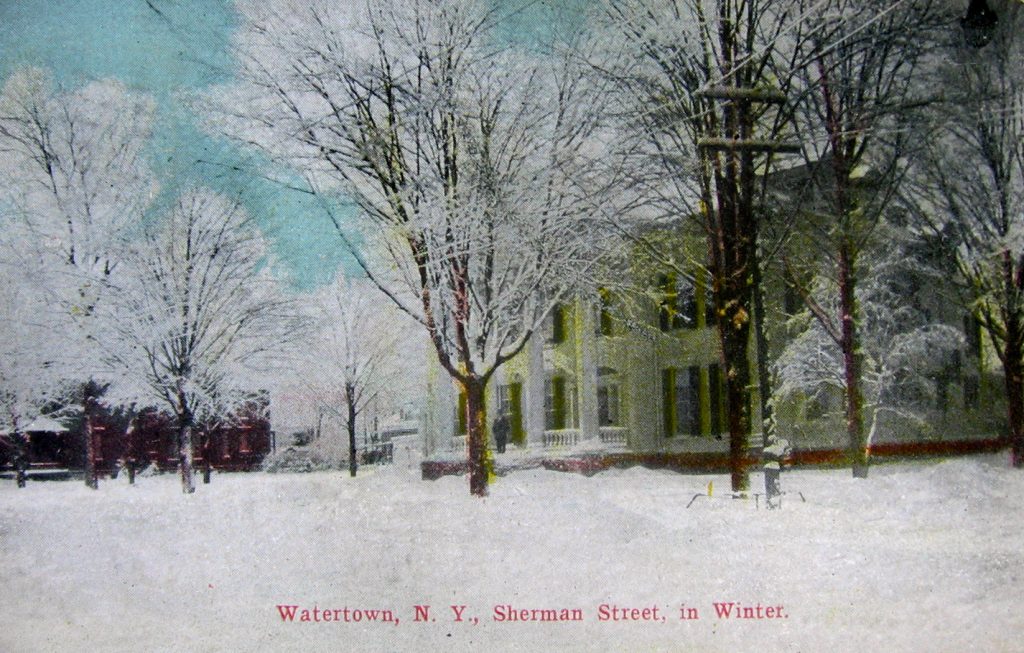
In another bit of irony, the infant daughter of Loyd O. and Marion R. Babcock Woodruff, Amelia’s sister, named Amelia Flower Woodruff, passed away at the home of H. H. Babcock the following year at the age of 1 year, 5 months, and six days – making her birth date a matter of a couple of weeks before her namesake passed.
Four years after the passing of Amelia, Anson Flower would marry her younger sister, Ida May Babcock, on December 31, 1878. The couple would reside in New York City, though they made frequent trips to Watertown, particularly for extended stays during the summer.
In 1903, H. H. Babcock passed away at the home of Anson and Ida in New York City at the age of 82. Babcock was among the oldest attendees of Trinity Church, which Anson helped to build anew with his brother Roswell in 1890, and also served as the last President of the village of Watertown before its incorporation into a city in 1869. His business, the H. H. Babcock Co., was exclusively a family affair that included Anson and Roswell as stakeholders.
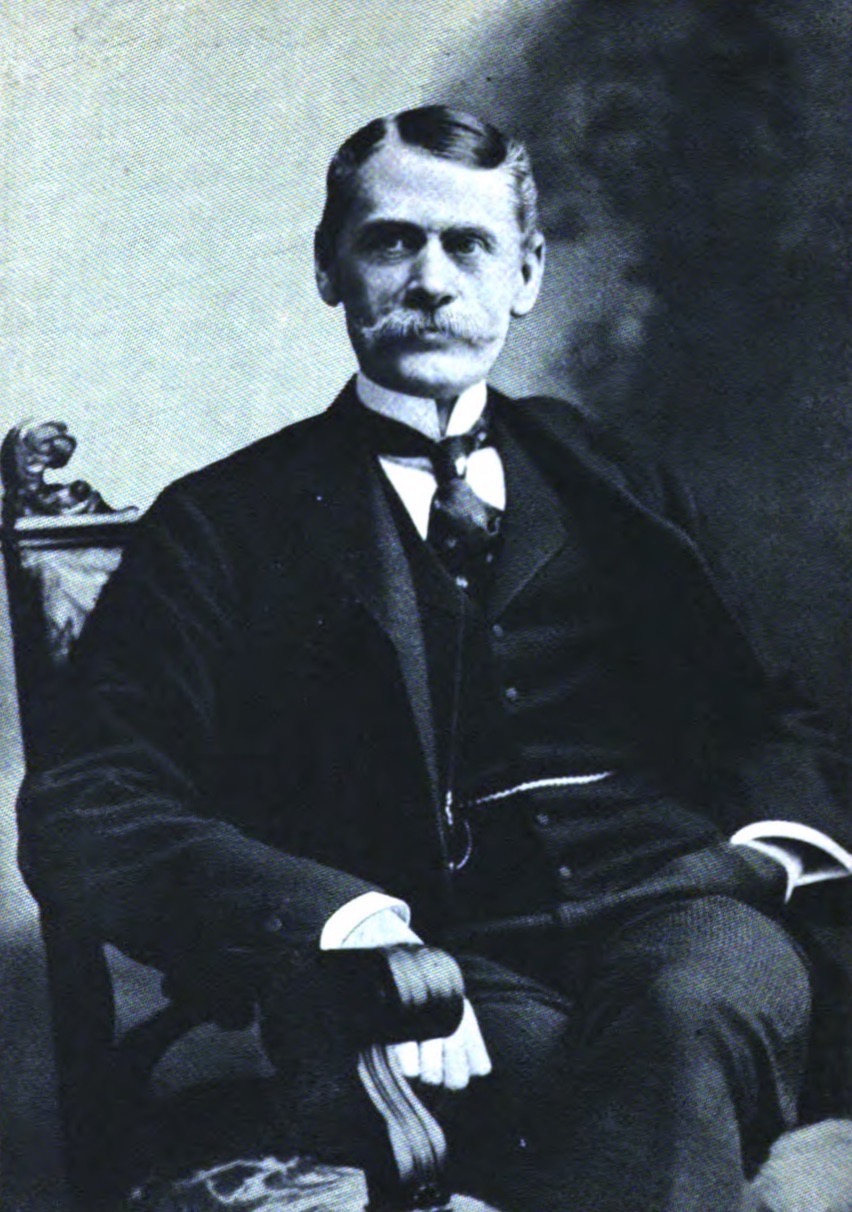
After Babcock’s death, Anson, who already owned and anointed the Hillcrest Farm on outer Ives Street along with a 5th Avenue Mansion in New York, would make a number of dramatic improvements to the former Babcock mansion. Work would be completed in 1904, and the Watertown Daily Times would report on August 13—
The spacious residence of A. R. Flower at the corner of Sherman and Mullin Streets, formerly the H. H. Babcock property, has been completed as has also the large stables of Mr. Flower.
The old Babcock residence has been entirely remodeled and besides a large veranda, an addition 48 x 22 feet has been constructed. The entire building inside and outside is of colonial design, pilasters and columns being thrown in the archways and side walls of the living rooms.
There are five bath rooms with tile flooring, and all other floors in the residence are of quartered oak. The stable is entirely new and is of strictly modern construction with perfect sanitary conditions.
The exterior of the mansion, facing Sherman Street, was the recipient of a makeover inspired by the White House, with four columns standing two stories high in a Greek Revival-style portico. A ballroom with a stage was also added on the third floor.
Anson R. Flower passed away in early January 1909, in his 601 Fifth Ave home in New York City, at the age of 65. He left behind a legacy that is often overshadowed by his brother Roswell and niece, Emma Flower Taylor, but unparalleled in its own right with the number of contributions he made in Watertown and New York City as a Wall Street financier.
Flower Avenue was named after Anson, who made the contribution to the first “macadam” road in the city – a type of road comprised of broken stones laid in symmetrical, tight patterns and covered with small stones to create a hard surface. The style would be incorporated into the roads of City (Thompson) Park during its construction in the early 1900s.
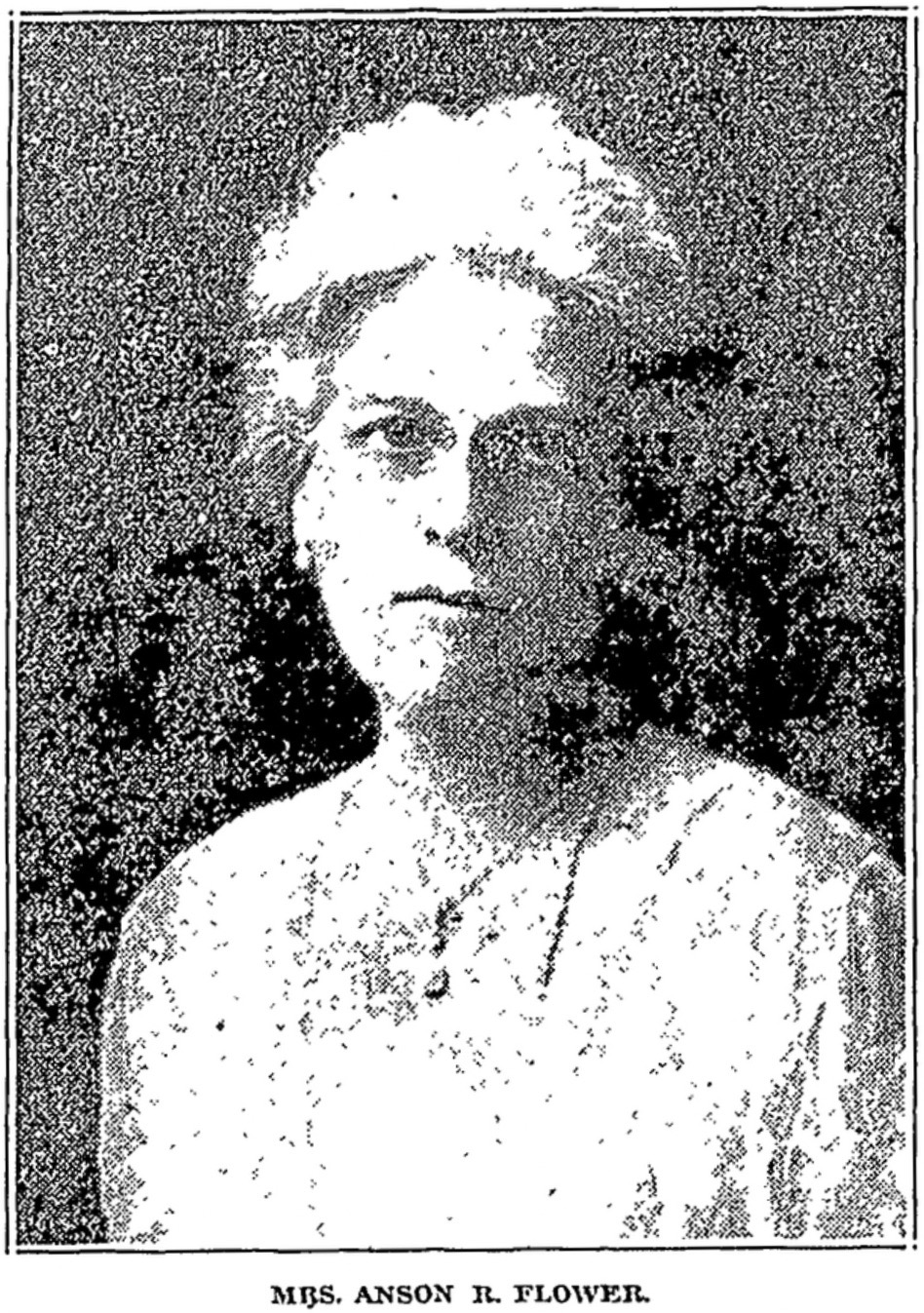
After Anson’s death, Ida would split her time between the Babcock mansion, the 5th Avenue home (later moving to the Plaza Hotel), and traveling while continuing philanthropic work. Like her sister before her, Ida also taught Sunday School at Trinity Church. Afflicted with a chronic heart condition, she suffered a heart attack and a stroke in 1925. Though never quite recovering, she would live another two years before passing just shy of her 73rd birthday in August of 1927. The last few years of her life, she and Emma Flower Taylor were the only two women on the board of managers for the Trinity Parish House.
In 1929, the former Babcock mansion was purchased by George and Louise Cox. Cox would have the interior of the home decorated by L’Hullier and Mayer the following year. George and Louise were the parents of WWII hero Lieut. George E. Cox, Jr., who won nationwide fame for his part in escorting President Manuel Quezon of the Philippines to safety in 1942.

Unfortunately, George E. Cox, Sr., would pass away in July 1944 at the age of 83. He was vice president of the North American Cyanamid Company, LTD., of Niagara Falls, Ontario, and died at the plant’s grounds suddenly while entertaining guests at a supper party.
The Cleveland Funeral Home Years
In August of 1951, Howard M. Cleveland, owner of the Cleveland Funeral Home, 161 Stone Street, purchased the residence from Louise Cox pending the City Council re-zoning the property for use as a funeral home. The action to approve would occur in mid-September. According to The Times—
Mr. Cleveland and his son plan to have the residence completely redecorated and remodeled and converted into a modern funeral home with a funeral chapel and other up-to-date equipment.
Mr. Cleveland, president of the company, in announcing the purchase of the Cox home, explained that the removal from the Stone street location is being made by the need for larger quarters and more adequate facilities.
In 1918, Howard M. Cleveland became associated with William R. Box, who ran the funeral home for years at 161 Stone Street. Upon Box’s death in 1925, Cleveland assumed the business with Harley A. Danforth, who named it the William R. Box Company. Mr. Cleveland would buy his partner’s interest out in 1932, and in 1950, when his son Harold joined the business, the name was changed to the Cleveland Funeral Home.
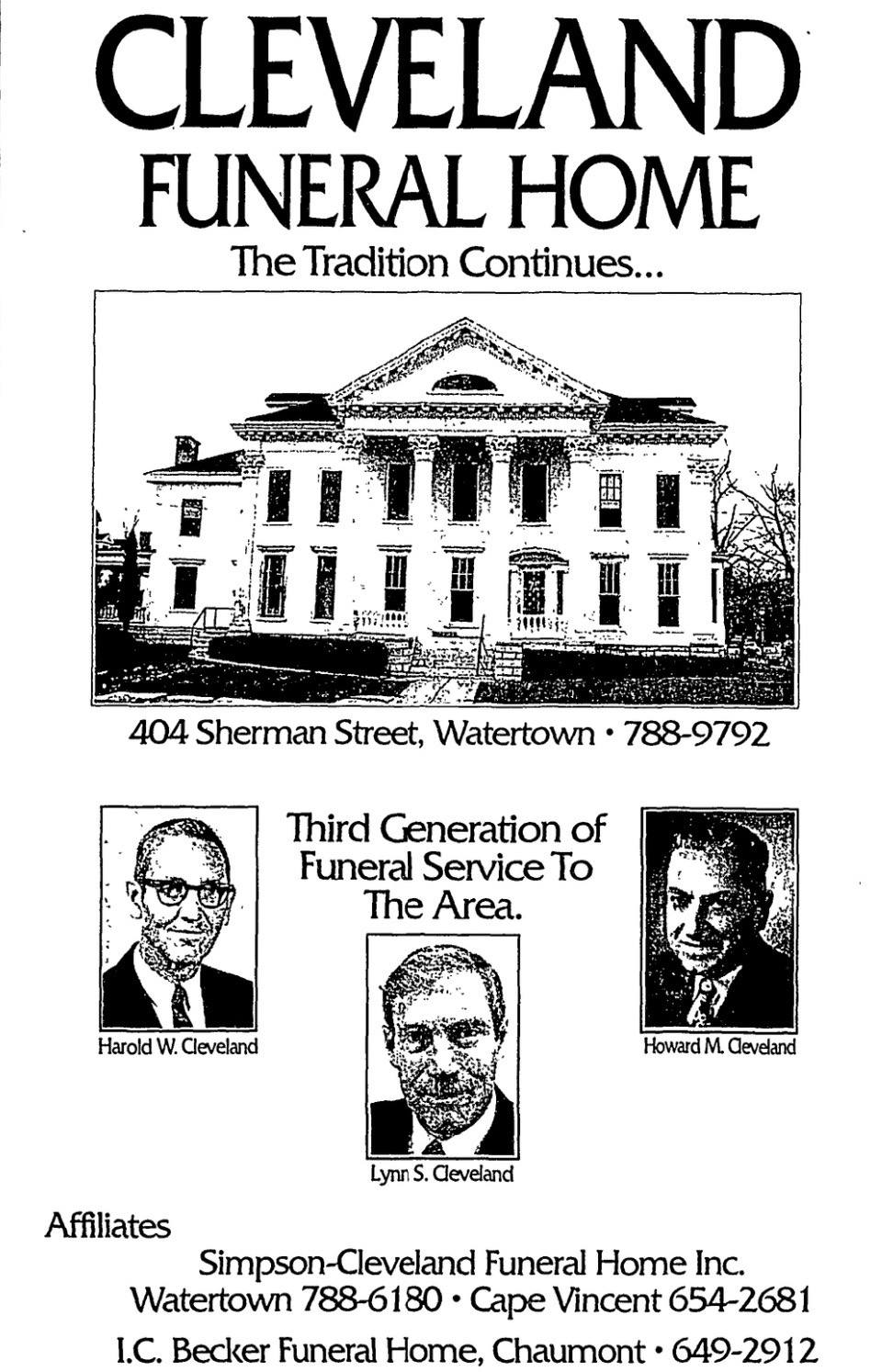
In the years since 1952, when the Cleveland Funeral Home officially opened at 404 Sherman Street, the operation has merged with various entities, including Wilcox & McCallen; Philip Spink who purchased the building in 1971, a year after Harold’s death and renamed the business to Cleveland-Spink Funeral Home; and the Cleveland-Miller Funeral home when Howard Miller purchased the property after Mr. Spink passed in 1988.
Howard would eventually rename it the H. D. Miller Funeral how afterward, but it went out of business in 1994, opening the door for the grandson of Howard M. Cleveland, Lynn S. Cleveland, to purchase the property in 1996. Lynn would spend the better part of the following year entirely renovating the funeral home portion of the building and opening it once again as the Cleveland Funeral Home on May 1, 1997.
In 2013, one of the long-time funeral directors with the Cleveland Funeral Home purchased the now three funeral homes under Lynn as well as a medical transport company and continue to operate it as the Cleveland Funeral Home.
